One of the issues often touted online about non-binary identity is around its demographics. This is all too familiar. Much of what I said on my posts about asexuality and age and asexuality and Pride (about representation) applies to non-binary identity too – there aren’t many of us, and those there are, generally feel like people quite unlike me. So who are the enbies and where do I fit in?

Me rocking the pigtail look.
Who are the non-binary people?
Calculating the number of people who are non-binary is quite tricky, as it very much depends on how you ask the question. A study by the Williams Institute (part of UCLA in the USA) calculated, based on two other surveys, that 11% of LGBTQIA+ people in the USA saw themselves as non-binary, but this figure includes identities like GenderQueer and GenderFluid. Their parallel study calculated 3.5% of the US population was LGBTQIA+, a figure that feels quite low but matches (indeed slightly exceeds) figures in the UK collated by the ONS.
The study gives the number of non-binary LGBTQIA+ adults who are non-binary at roughly 1.29 million. In the UK, assuming comparable population makeup, this suggests there’s around 258,800 enbies, roughly equivalent to the population of Salford. One caveat however; this was a study of LGBTQIA+ adults, ages 18-60, so excludes both population at either end of the age range, but also non-binary people who don’t define themselves as LGBTQIA+. While the definition of the rainbow acronym is beyond the scope of this blog post, it might be that some people view it as a synonym for ‘gay’ and they don’t consider themselves to be gay. Interestingly, 34% of enbies identified as ‘bisexual’ or ‘pansexual’, 31% as plain ‘Queer’, and 14% as Asexual, higher than Gay (10%) and Lesbian (6%).
Further stats this study revealed were that 76%, three quarters, of LGBTQIA+ enbies were between the ages of 18-29, and they skew to both an urban and a less affluent background.
Why is non-binary identity more prevalent in younger generations
Just as with asexuality, non-binary identity would have been ignored, or perhaps even forbidden to be talked about in helpful circles (cf Clause 28) when I was growing up. Add to this the fact that the sheer idea of breaking the gender binary wasn’t on people’s radar in previous decades. It was hard enough to accept the idea that we could break free from heteronormativity, and when it came to issues of Gender there was generally only one concept in town – people who were then referred to under the somewhat slurry name of ‘gender benders’ (or often just ‘bender’, especially when used as a childhood insult, a fact that low-key amused me when I visited Transnistria), but who we’d now call Trans Women. That’s not to say Trans Men or Androgyny didn’t exist, but it seemed to be never couched in those terms.
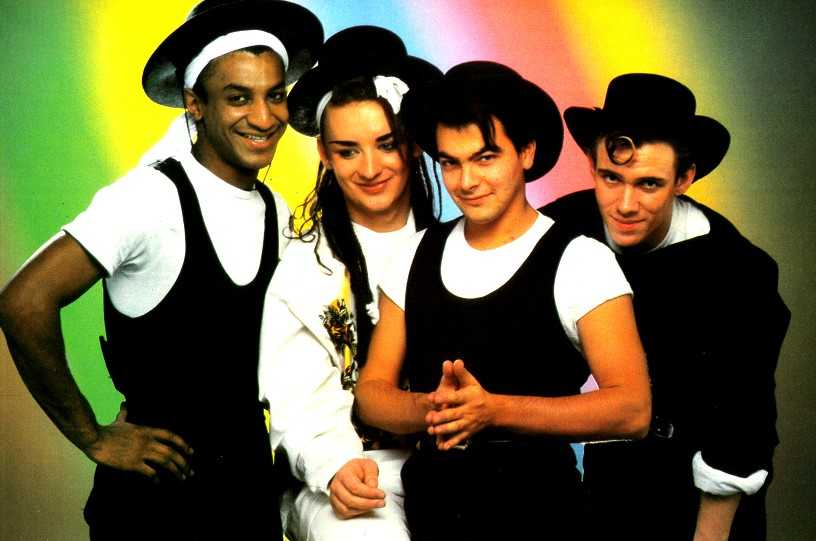
80s band Culture Club. At the time, four very non-standard-looking men.
When I was very young, the music genre ‘electropop’ gained traction, and one of the leading artists was Gary Numan. Although male, his act could be described as ‘cyberpunk’ (in that late 70s way) and many of his fans became ‘Numanoids’ – dressing in genderless outfits and make-up that didn’t so much paint the face as more cover it like a living room wall ready for a house-sale. But looking back, I don’t recall anyone saying they were doing it as a gender-neutral exercise directly, and Numan himself never referred to himself as anything but male. A couple of years later came post-punk and new-romantic, almost the opposite, with ‘dandy highwayman’ in very (at the time) effeminate/femme outfits and make-up, people like Adam Ant and early-edition Duran Duran and Spandau Ballet. Again, though, they never identified as anything other than ‘men’, and the general vibe from the media was simply ‘are you straight or gay?’. Even people like Boy George and Pete Burns, who very definitely pushed the Gender Envelope and would be considered Trans were still seem first and foremost as ‘puffs’, and secondarily as ‘wannabe women’. From the male side, there was pretty much no actual non-binary rep.
The same is true, but in a very different way, from the female direction. Obviously this was the era when women’s lib movements were starting to win, and the idea of a woman wearing men’s clothes was seen as ‘controversial, but comfortably edgy’, as opposed to men wearing women’s clothes which was often either played for laughs, or an absolute or direct threat. It became ‘acceptable’ (for a given value) for women to model in suits, jeans, trousers; to wear less make-up; to have shorter, ‘mannish’ hair, and the like. One of the iconic images that sticks with me is that of American singer Patti Smith on the cover of her album Horses; a deliberate attempt to look less ‘feminine’ (and apparently more like the French poet Charles Baudelaire). While ‘androgyny’ was mentioned, even at the time, it was more an artistic choice rather than anything to do with her personal Gender Identity. What it did show, however, was that a more gender-neutral look as possible, and attainable, at least for women.
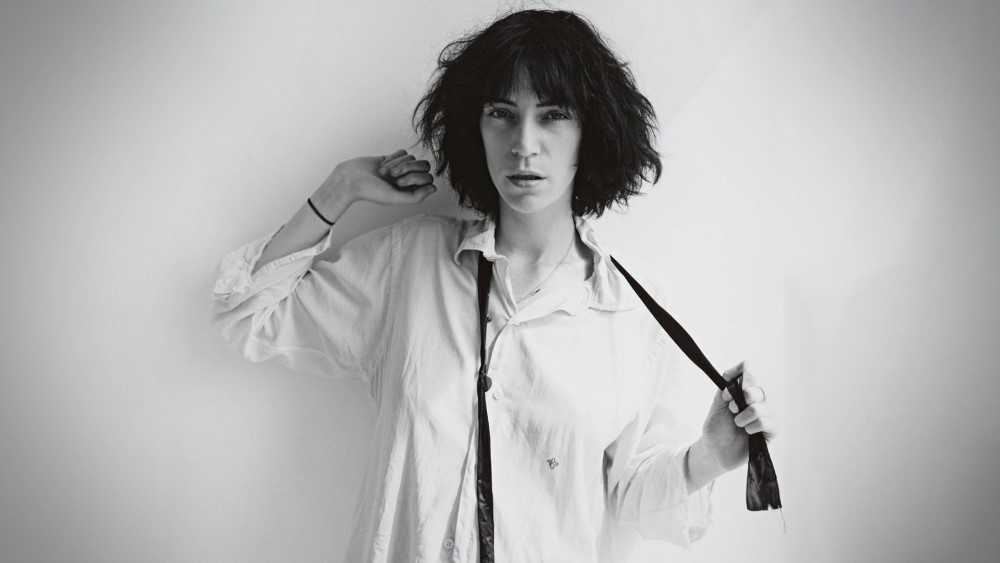
Rock icon Patti Smith – not the exact shot but the same photoshoot as that iconic album cover.
However, regardless of all of this, people still identified within the gender binary (even if they were striving to cross it), so the idea someone could be ‘neither’ didn’t really register with anyone in the mainstream. Indeed, apart from a very small handful of people in history, the first references to ‘non-binary identity’, at least in the western world (it’s not my place to talk about two-spirit or Hijra people) were in the very late 80s and early 90s – the Bisexual Manifesto of 1990 stated ‘don’t assume there are only two genders’, while ‘The Welcoming Congregation Handbook’ published the same year seems to be the first recorded mention in print of the word ‘GenderQueer’, which initially encompassed everyone outside the Gender Binary. Note the era here; it was during that time when education about LGBTQIA+ topics in general was repressed. It’s only been in the last couple of decades, with the liberalisation of culture and the rise of the internet, that has made it far easier and safer to find out information about non-binary identities, and therefore people in Gen-X and older weren’t exposed to it during the time it would have been helpful and important.
But it’s never too late.
How is male non-binary different to female non-binary?
The history of gender I alluded to above leads to a discrepancy between male-bodied non-binary presentation and female-bodied non-binary presentation that exists to the present day. It’s that this differentiation between male and female ways of expressing different gender identity has stayed very much in the public consciousness, even as non-binary identity has become more accessible. Simply put, it’s easier to be an enby with a female body than a male body.
This is very evident with a simple websearch. One leading result for ‘how to look more non-binary’ lists options such as ‘white button-down shirt’, ‘hoodie’ ‘jeans’ (!), baseball cap (?), and a scarf (?!). Another site gives suggestions such as ‘play up your masculine features’, ‘keep your complexion minimal’, and, er, ‘consider chopping your hair off’.
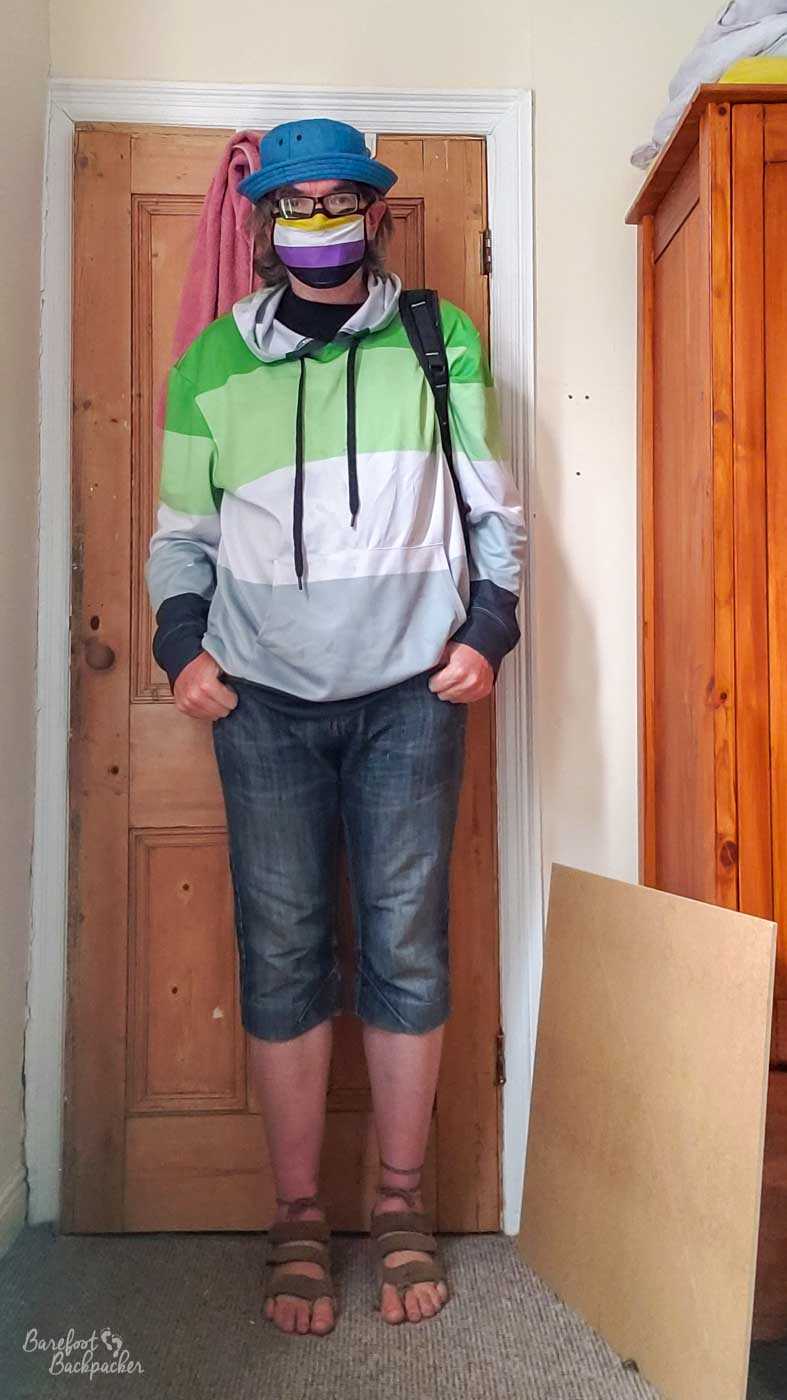
Me doing some of those things, but not others, giving the impression I’m slightly younger than I am, but not necessarily more enby.
The trouble is, if I wear a hoodie, I look like a man in a hoodie. If I wear a suit, I look like a man in a suit (specifically, a man who looks really awkward in a suit). If I wear jeans and a hoodie … like, that was my normal attire for much of my 30s, before I even knew non-binary existed. As for ‘play up your masculine features’ …
The issue is, very much, non-binary identity is seen as something that female-bodied people can strive for, rather than male-bodied people. The vast majority of non-binary style guides, those that cater for actual outward presentation anyway, rather than behaviour, seek to accentuate male characteristics and design in female people, rather than even consider male people at all. If I followed those tips, I’d look even more like a man than I do now.
But if I reverse the concept, and try to look more feminine … I just end up looking like a man in a dress. Male-bodied non-binary people find it difficult to look non-binary, as most attempts at doing so will make us look more Trans than Enby.
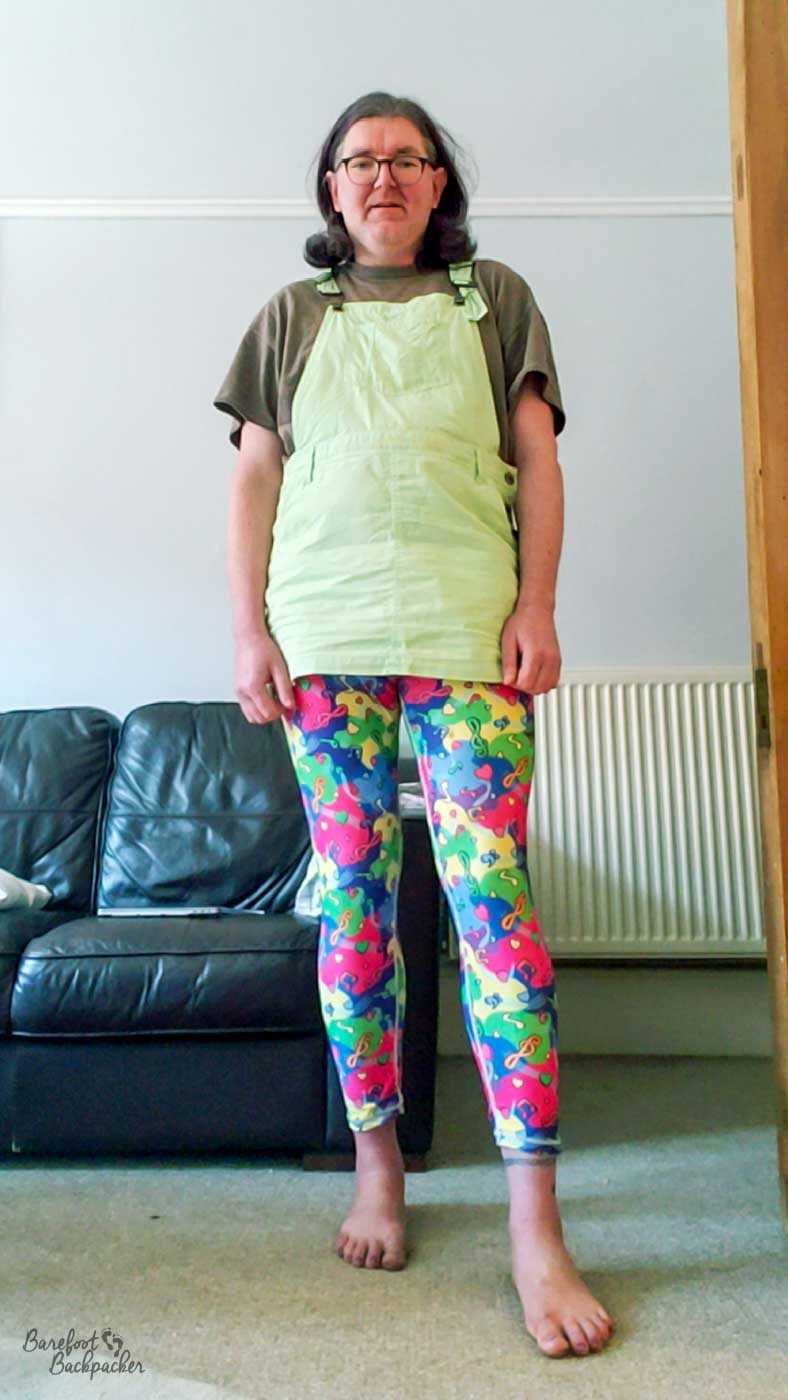
You may want to know I’ve never stepped out the door dressed like this.
This extends into generic consciousness. It’s much easier to be viewed as non-binary from the female direction. So much so, in fact, that critics and transphobes have decried non-binary as being ‘feminine-lite’. Male-bodied enbies are very rare, and those that are, are, in many ways, relatively indistinguishable from either slightly eccentric Men, or Trans Women.
Gender-neutral fashion exists; the most obvious *is* the jeans-and-t-shirt look I mentioned above. But if I wear that, even if both are designed for women, I still look like a man, and specifically (because of the cut of female t-shirts), a man who wants to be a magazine cover model or whatever generation’s equivalent of Brad Pitt. There is, of course, also dungarees, an absolutely fabulous item of gender-neutral clothing that brings to mind childrens’ TV presenters or, in men specifically, a certain type of indie musician. And while I love the vibe and rock them wherever possible, they’re definitely gender-neutral in the sense that regardless of your plumbing, going to the toilet is pretty much the same level of hassle. But even in dungarees I will look like a man wearing dungarees, rather than having anyone think I’m breaking the Gender Binary, And if I wear a dungaree dress, or even a long dungaree pinafore, that just vibes as being femme, rather than enby. A woman in a suit is Enby, a man in a dress is Trans.
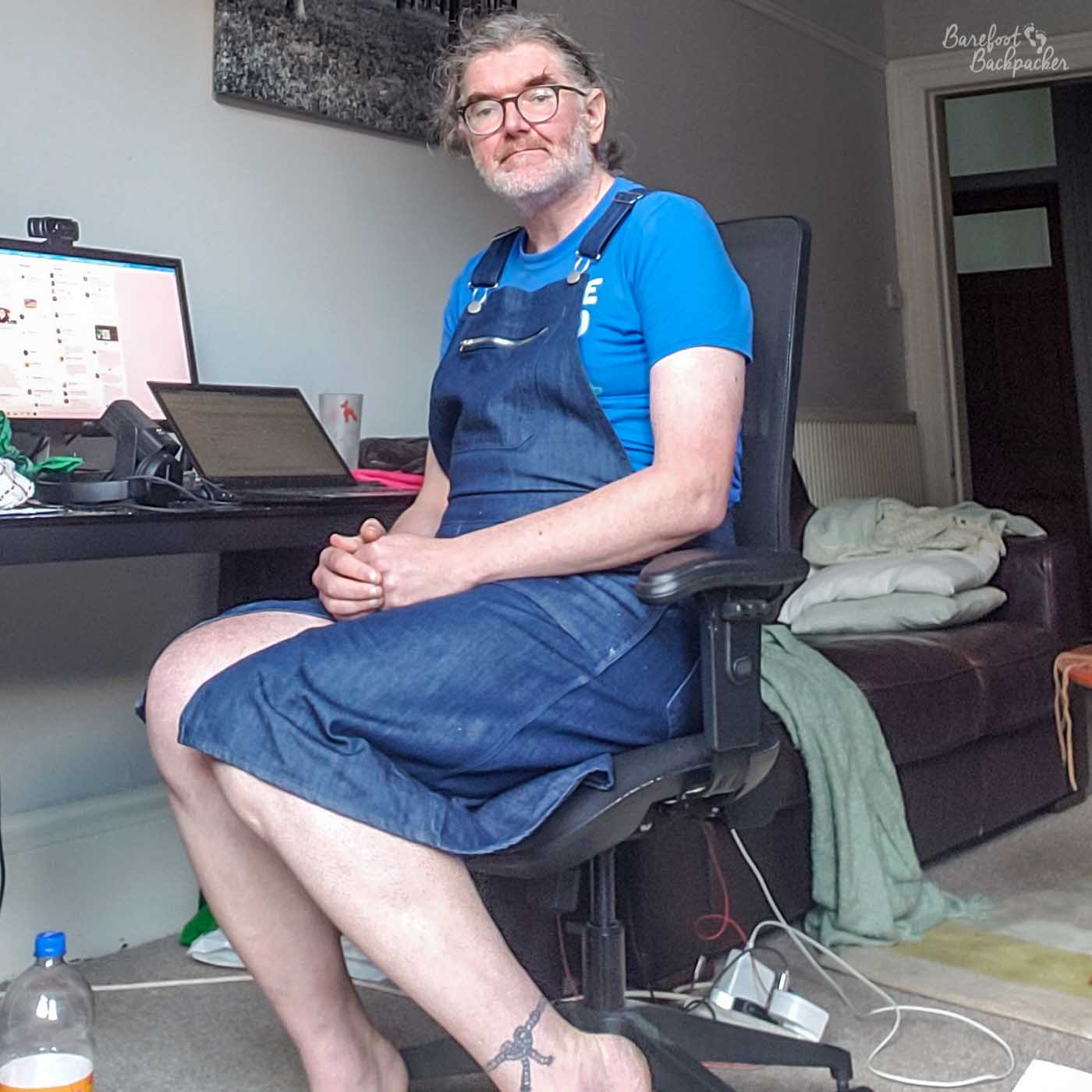
A man in a dress, dungaree variant. I mean, I might look different with less body and facial hair.
Everything else leads to malformed opinions too. A woman with short hair could equally be clocked as Enby or as a Lesbian; a man with long hair is either ‘a closet gay’ or ‘1985 called, you can stop singing in a falsetto now’. Unpainted nails on a woman is pretty much ignored, painted nails on a man is ‘you’re gay’ territory. Ditto rings, earrings, and other jewellery and accessories. For female-bodied, appearing non-binary can be a simple case of dropping these things; male-bodied people can’t easily adapt them to the same ends.
Sometimes, non-binary looks vaguely generically male.
What’s the difference between Non-Binary and Transgender?
The Rainbow Acronym doesn’t specifically include non-binary identities. The general consensus is that the concept of non-binary falls under the T. This is because, if you consider Trans as being ‘the gender you identify with is different to the gender you were born with’, people who are non-binary *by definition* have a different gender identity to their birth identity.
The difficulty comes with regard to the implied definition of Trans. For the majority of people questioning their Gender Identity, they see themselves as the opposite side of the Gender Binary, and there is a kind of societal expectation that someone born as a woman, say, who doesn’t feel an attachment to their birth gender would go through a ‘transition’ to more reflect the male identity they perceive themselves to be. Transition is a ‘journey’, with the expectation of a destination across the Gender Binary divide.
People who are non-binary kind of ‘get off the train at an intervening stop’. Maybe they end their journey there. Perhaps they take a branch line to a different, and less well known, destination – ‘beyond the brochure’ as it were. And because they’re not aiming to Transition to the opposite Binary Gender (or at least, not yet – certainly some people will go through the non-binary stage and use it as a stepping stone to explore their Gender Identity deeper, sometimes culminating in a Gender Binary Transition), many enbies wouldn’t consider themselves to be Trans.

My last day at my old job, Easter 2018. This was an idea of my then-recently-ex-girlfriend that I should turn up on my last day looking very female. My work colleagues were less surprised by that than my turning up in a suit three days earlier. Make of that what you will.
Another issue here too is that, because public perception of Gender is ‘there’s only two’, it’s technically impossible to Transition to non-binary, at least socio-culturally, because regardless of your presentation, regardless even if you take some active steps towards Transition, you will always be classified as male or female in the average person’s eye. Regardless of gender markers on your IDs, for instance, people will still see you as either male or female, and never as non-binary.
The Williams Institute study referred to earlier noted that just under a third (32.1%) of survey respondents who identified as Trans also identified as non-binary (it was only 7.5% of those identifying as Cis), while 42% of non-binary people identified as Trans. These are high proportions, but they’re still both less than half – while there’s a significant overlap, the majority of enbies don’t seem to identify as Trans.
What’s the difference between Non-Binary and GenderQueer?
[Non-binary people have a better flag.]
GenderQueer seems to have been the original term used to describe all people who broke the Gender Binary, but over time more specialist and specific definitions have arisen. A lot of these definitions are subjective, of course, but for me, GenderQueer is an overall category, a bit like Trans, which has a number of subcategories underneath.
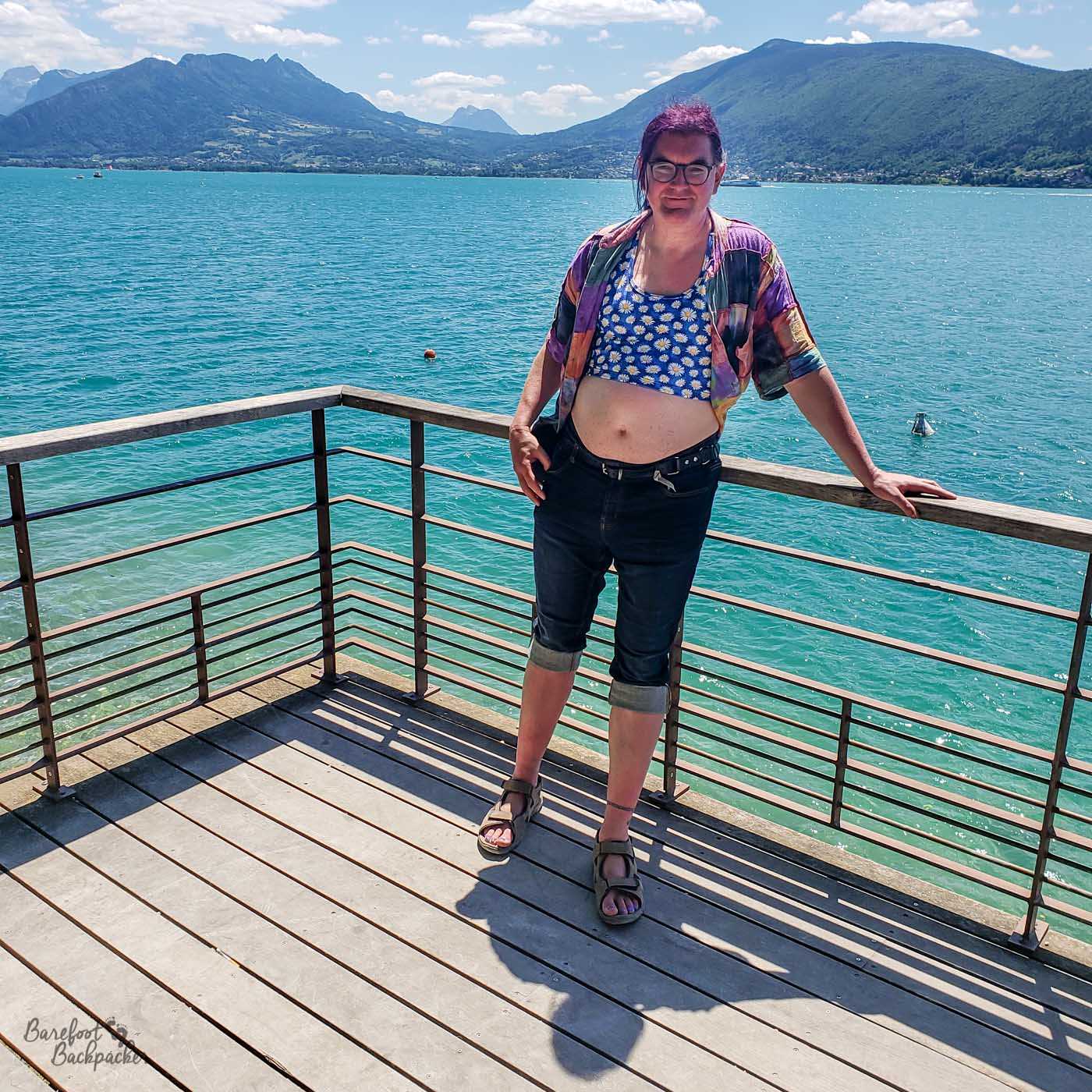
I don’t know how comfortable I feel about this, but since I’ve gone out in public in this manner, I guess I must be at least partially okay. But I was with a close friend, and not alone, maybe that helped. The worst thing that happened – excessive sunburn.
I tend to veer towards non-binary to describe myself because while GenderQueer might include non-binary, the word on its own doesn’t have to. GenderQueer could be GenderFluid where you veer between male and female, sometimes both, but not necessarily neither. GenderQueer could be Trans. So for the avoidance of doubt, while I could definitely claim to be GenderQueer, I personally prefer to describe myself as ‘Non-Binary’.